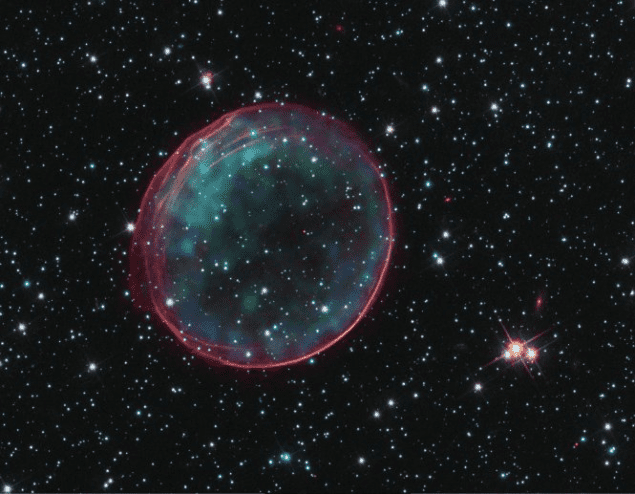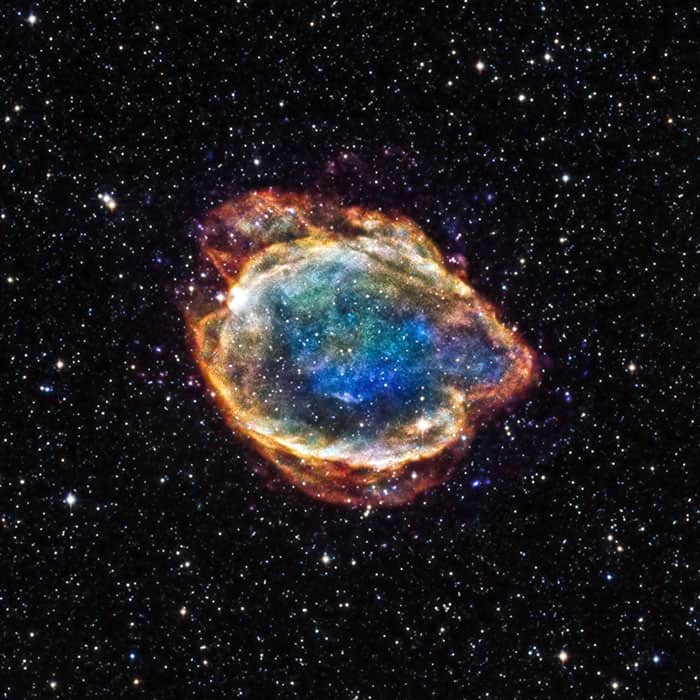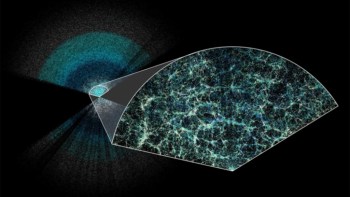
Primordial black holes do not account for all dark matter, according to new research by Miguel Zumalacárregui and Uroš Seljak at the University of California, Berkeley. The duo has made the best measurement yet of the abundance of black holes in the cosmos by measuring the gravitational lensing of light from type 1a supernovae. Their study puts an upper limit of 40% on how much dark matter can be accounted for by primordial black holes
For decades, physicists have grappled with growing evidence that the formation and dynamics of galaxies and larger structures in the universe are governed by gravitational forces from unseen dark matter. While the mysterious substance appears to account for about 85% of all matter in the universe, dark-matter particles have yet to detected directly.
While most astrophysicists believe that dark matter is some sort of exotic particle, another explanation – first put forth in 1974 by Stephen Hawking – is that primordial black holes could account for some dark matter. Such black holes could have formed in the early universe and could have masses that range from just millionths of a gram to billions of solar masses. They are not expected to be surrounded by radiation-emitting disks of gas and dust – which would make them dark and very difficult to detect.
Bending starlight
One way of testing Hawking’s hypothesis is gravitational lensing. This occurs when a massive object such as a black hole lies between the Earth and distant star. The gravitational field of the black hole bends the starlight towards Earth, making the star appear brighter. The idea is that as primordial black holes move across our view of distant stars, the light we observe should fluctuate over relatively short timescales. Lensing studies have already ruled out the existence of large numbers of primordial black holes that range in size from the very tiny to about 10 solar mases.
More massive primordial black holes, however, are difficult to study in this way because the light fluctuations occur over timescales of decades – making astronomical observations impractical. As a result, astronomers have been unable to search for larger primordial black holes.

Supernovae analysis finds scant evidence for dark energy
To get around this problem, Zumalacárregui and Seljak looked at light from gravitationally-lensed type 1a supernovae. Dubbed “standard candles”, these exploding stars give off light at a very specific brightness that fades over time in a very specific way. When viewed through a gravitational lens, the relationship between the brightness of the supernova and the rate at which it fades should be different than that seen in a supernova that is not lensed. This should reveal the presence of large primordial black holes without the need for long observation times.
Zumalacárregui and Seljak analysed observations of 1300 supernovae and found no objects with an unusual brightness-fading relationship. This allowed them to conclude that there cannot be a sufficient number of primordial black holes with masses greater than 0.01 solar masses to account for all dark matter in the universe. Instead, they say primordial black holes could account for at most around 40% of dark matter. The result confirms the importance of continuing the search for as-yet unobserved sources of dark matter, including elementary particles such as WIMPs, sterile neutrinos and axions.
The research is described in Physical Review Letters.



